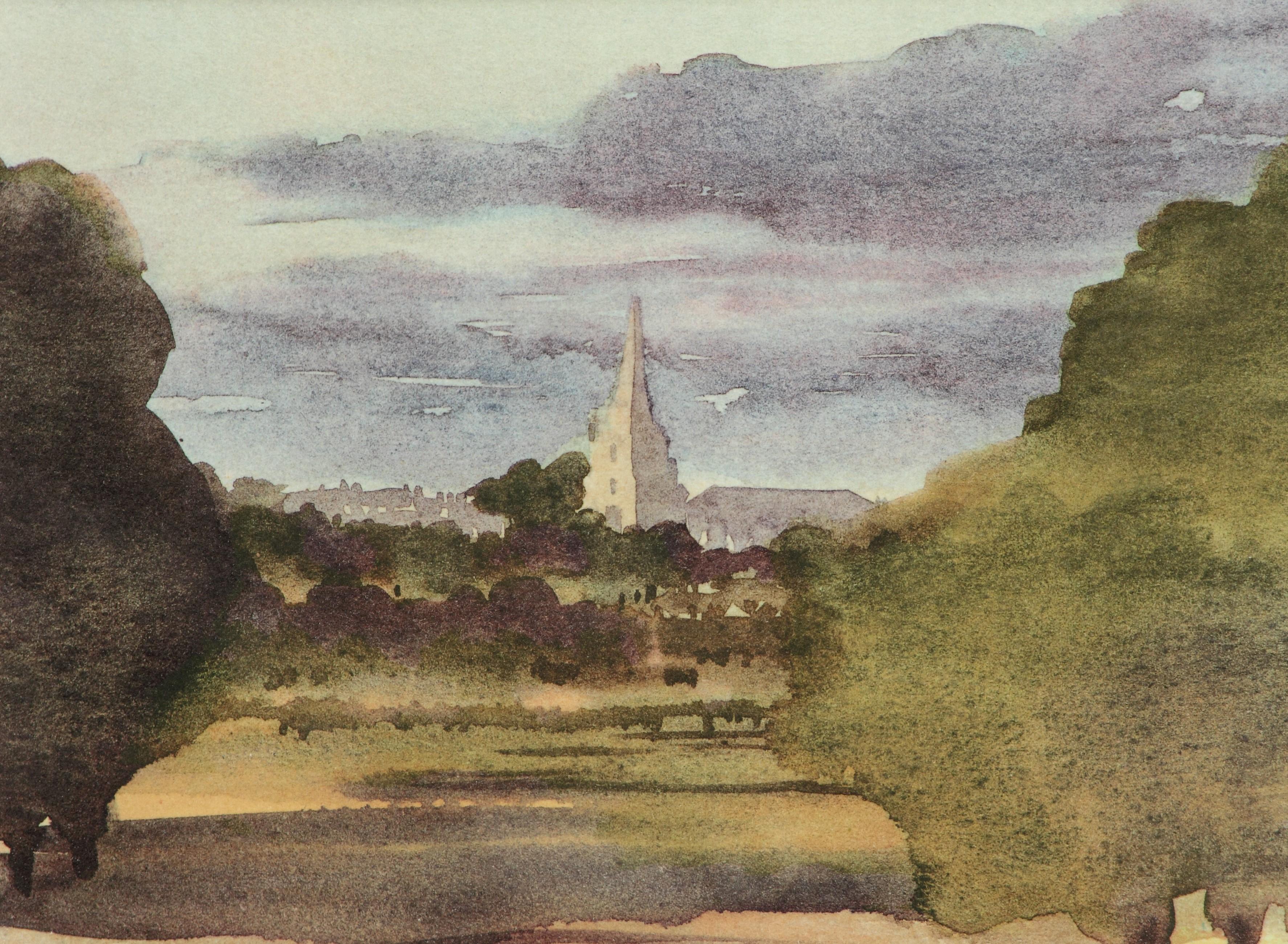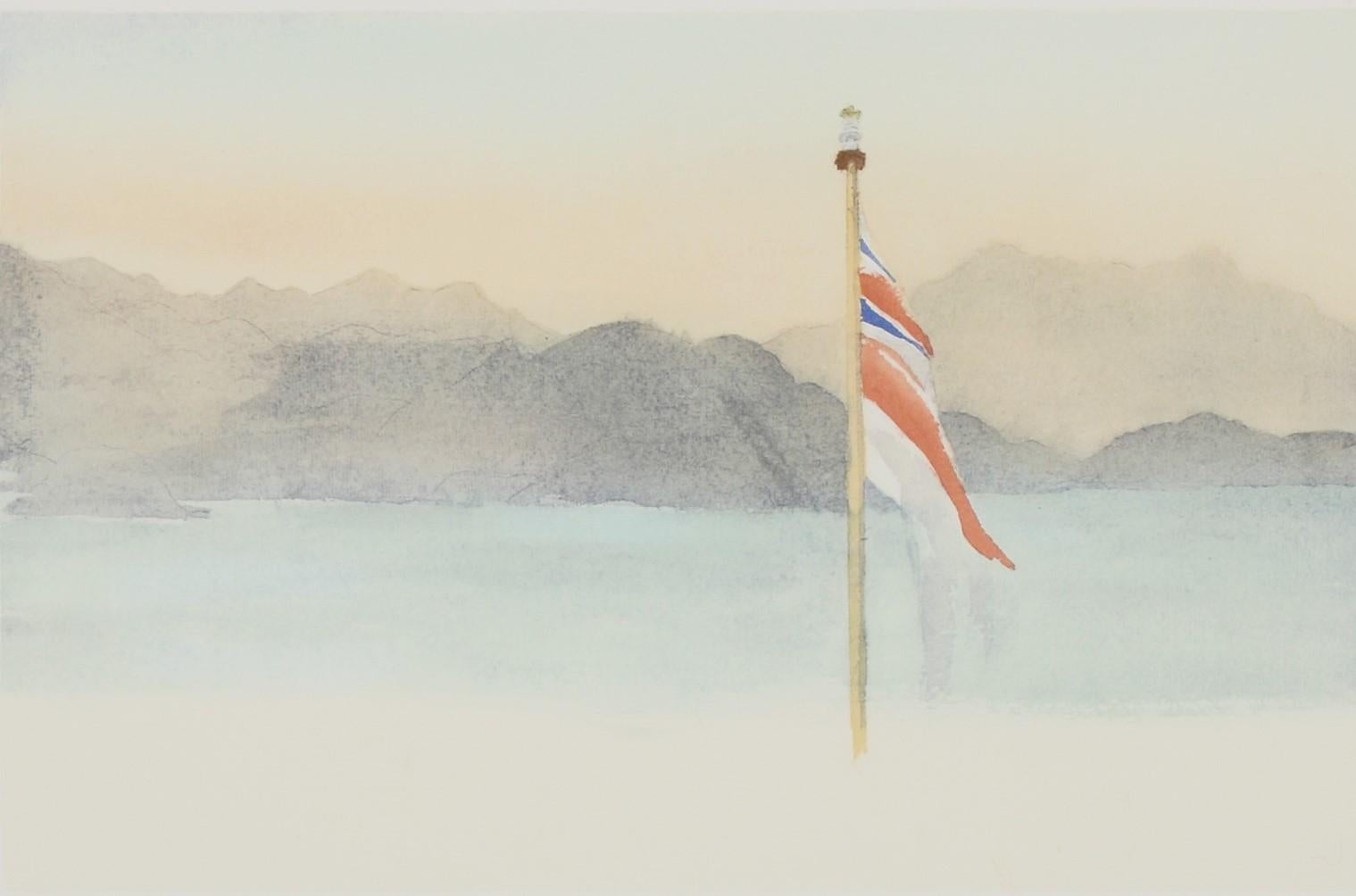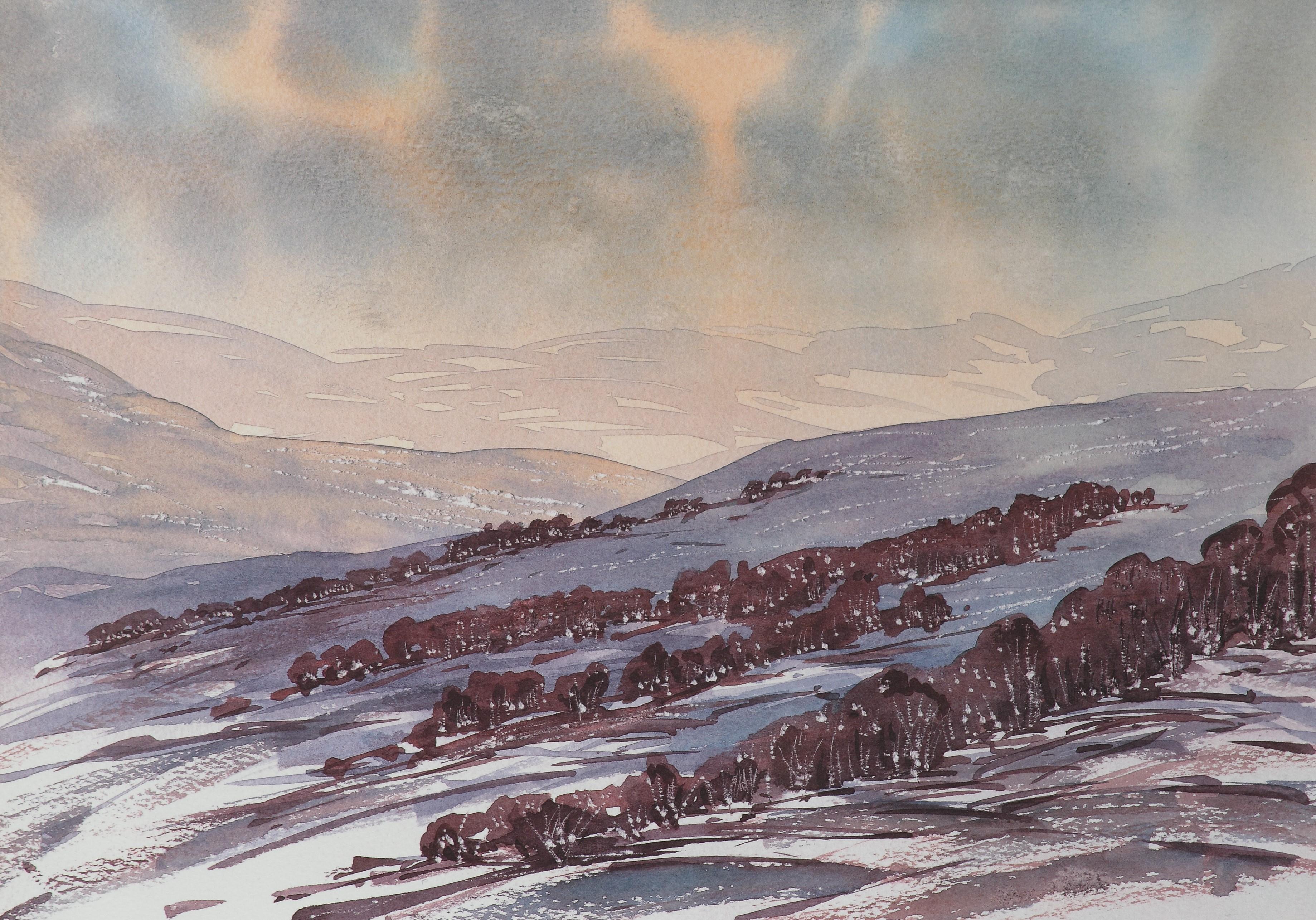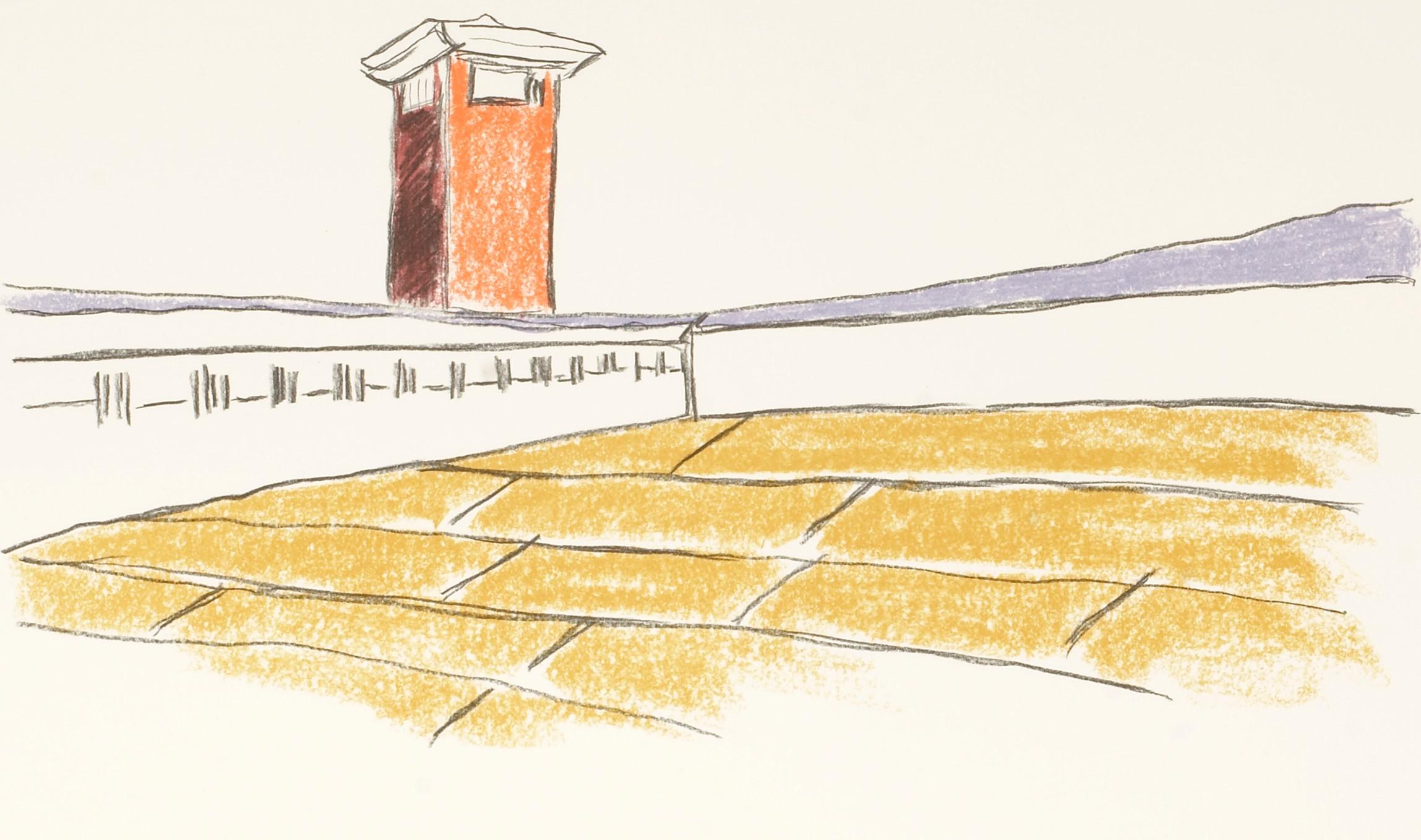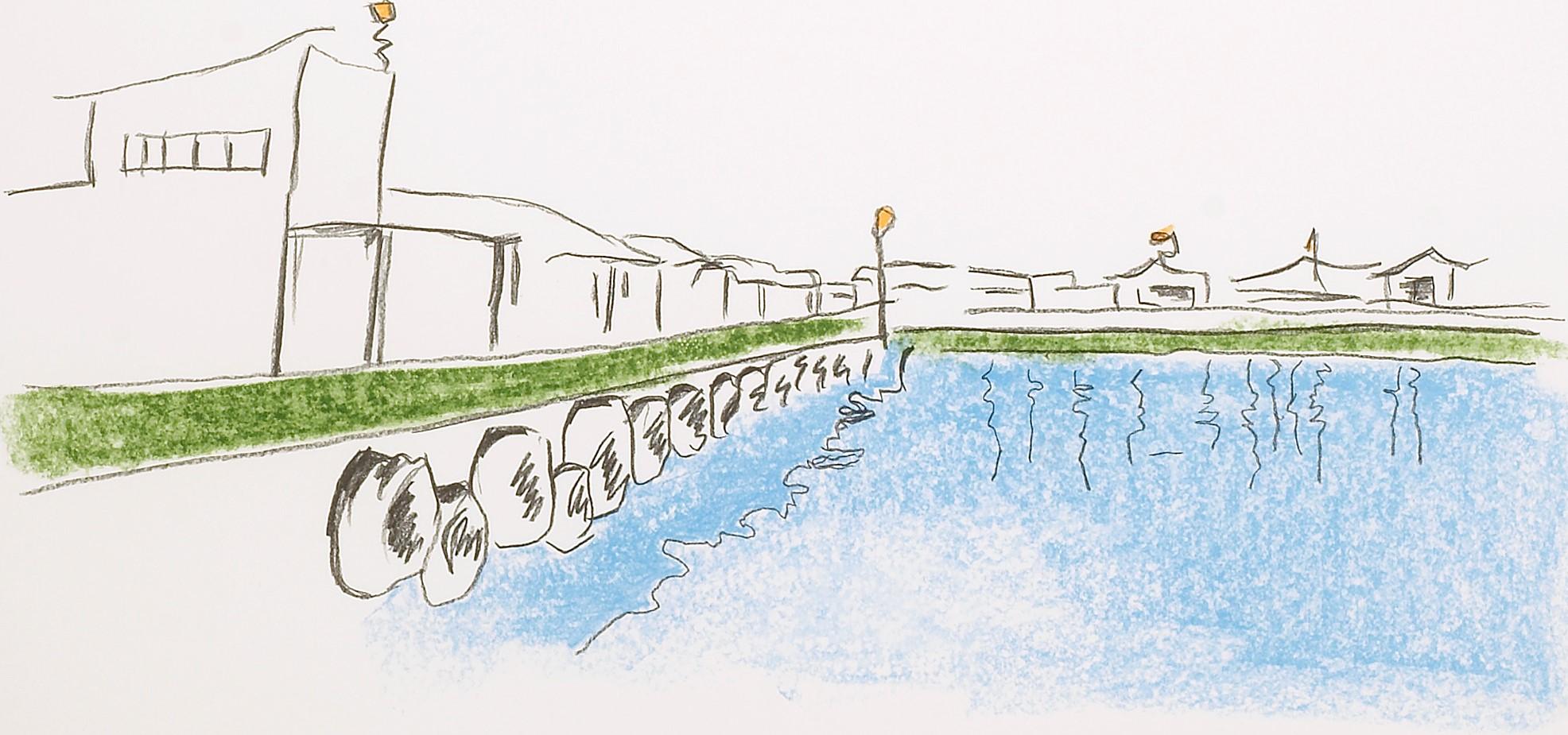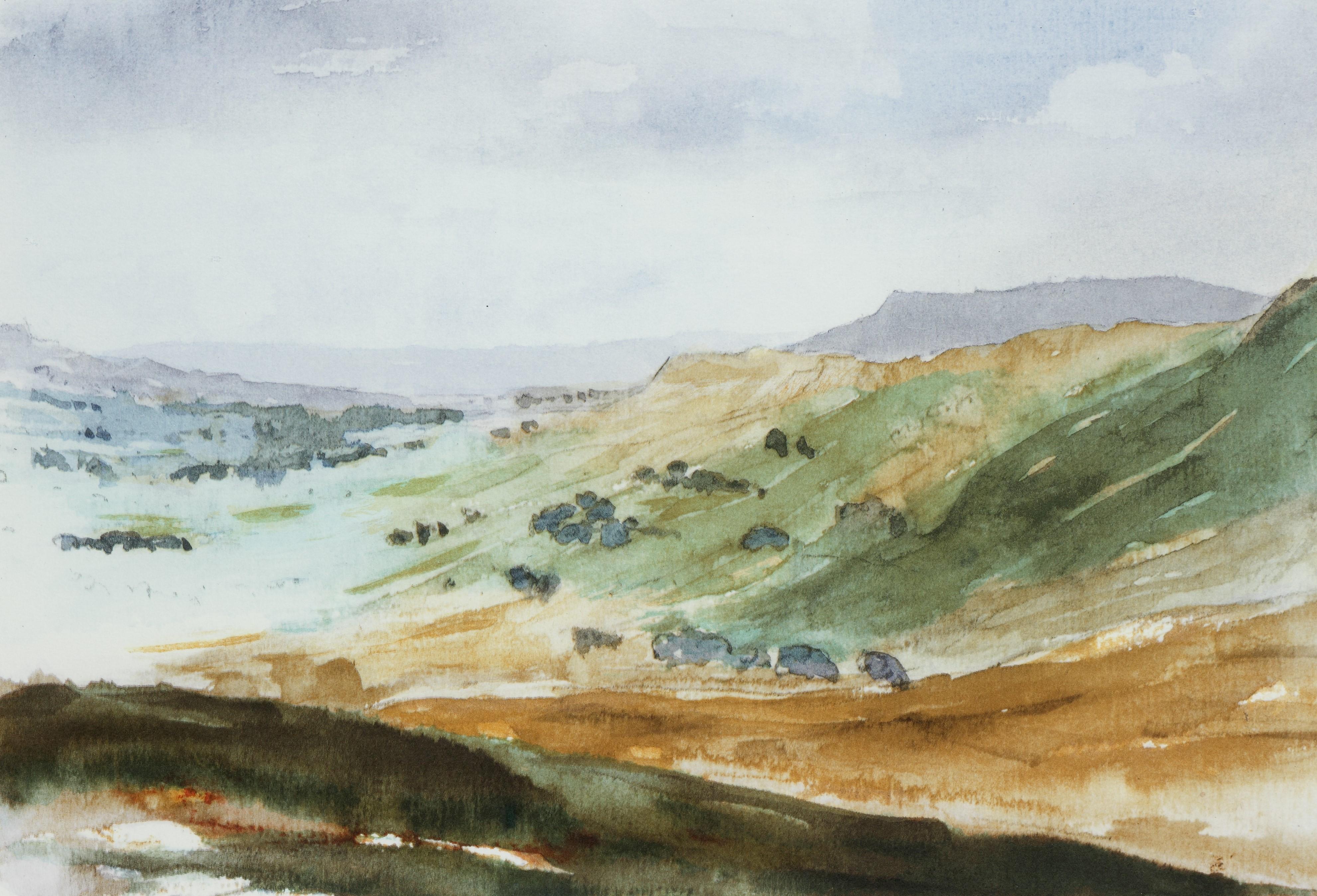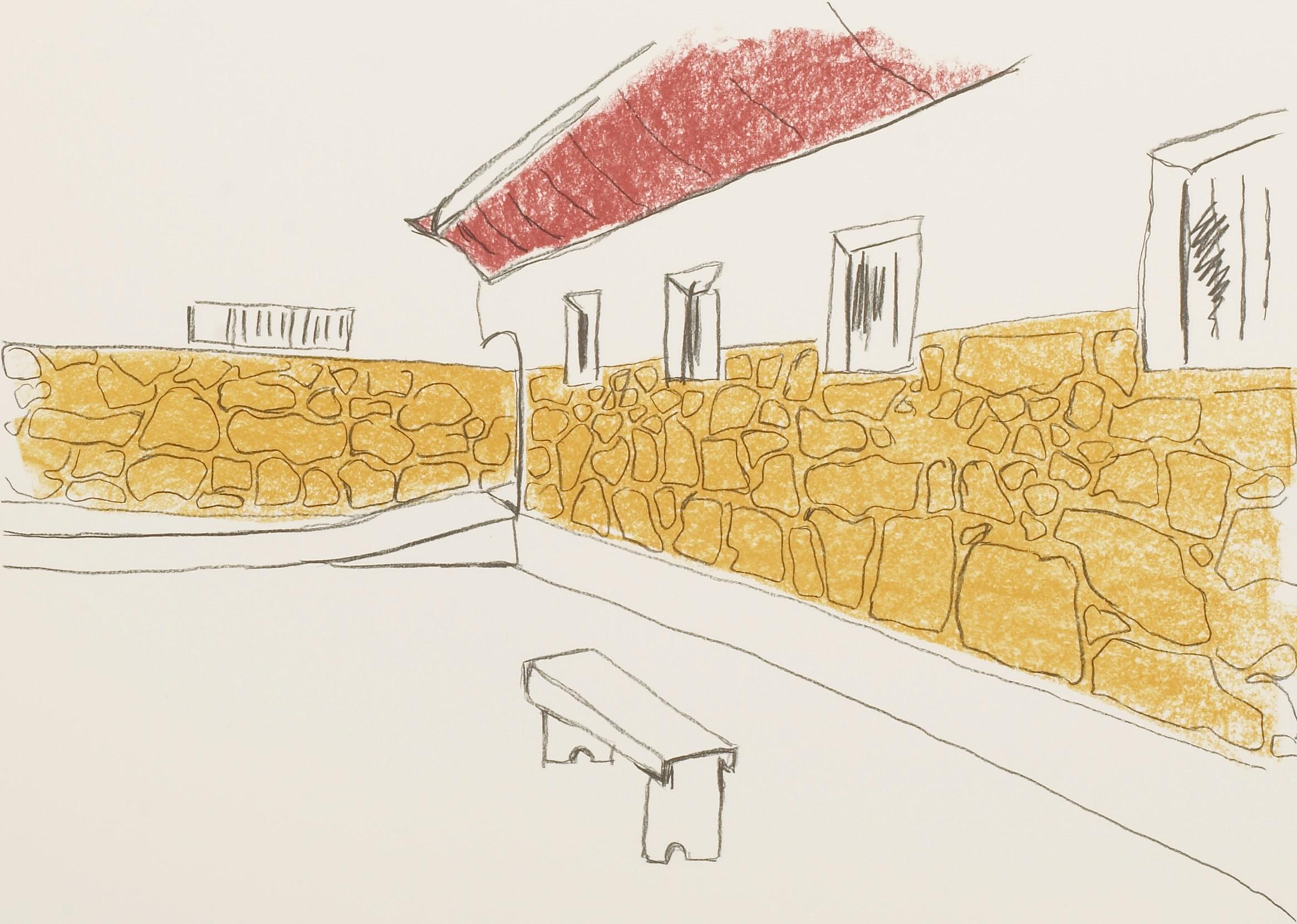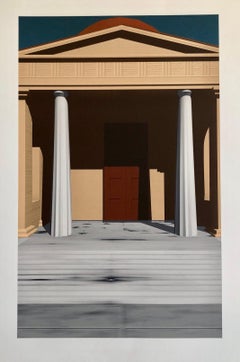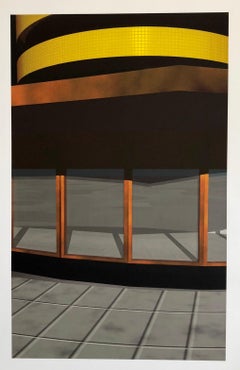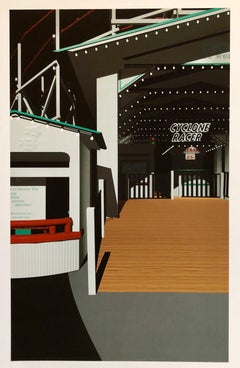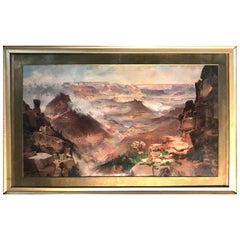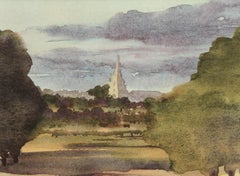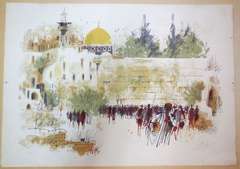
"the Western Wall, Old City of Jerusalem" lithograph
View Similar Items
Want more images or videos?
Request additional images or videos from the seller
1 of 6
Shmuel Katz"the Western Wall, Old City of Jerusalem" lithograph
About the Item
- Creator:Shmuel Katz (1926 - 2010, Austrian, Israeli)
- Dimensions:Height: 19.5 in (49.53 cm)Width: 27.5 in (69.85 cm)
- Condition:it has untrimmed edges. minor creasing, slight toning and a minor tear in edge. (it was never trimmed.).
- Gallery Location:Surfside, FL
- Reference Number:1stDibs: LU382107288
About the Seller
4.9
Platinum Seller
These expertly vetted sellers are 1stDibs' most experienced sellers and are rated highest by our customers.
Established in 1995
1stDibs seller since 2014
1,550 sales on 1stDibs
Typical response time: 1 hour
More From This SellerView All
- Location Proposal Iris Print Ed. 12 Architectural Study LA CAlifornia ModernistBy Cindy BernardLocated in Surfside, FLCindy Bernard’s career spans nearly three decades and she is best known for photographs and projections that explore the relationship between cinema, memory, and landscape including the widely exhibited series Ask the Dust (1988-92), now in the collections of the Museum of Contemporary Art, Los Angeles (21 part set), the Pompidou, MOMA and the Whitney Museum of American Art. She is a recipient of grants and fellowships from the J. Paul Getty Trust Fund for the Visual Arts, California Arts Council, Creative Capital, Anonymous Was a Woman, the Harpo Foundation, California Community Foundation, the John Simon Guggenheim Memorial Foundation and the MacDowell Colony. Her work has been exhibited in museums and galleries in the US, Canada, Mexico, Europe, and Japan, and was included in the Whitney and Lyon Biennials. In addition to her visual practice, Bernard takes an active interest in the spaces and production of social exchange. She was a director and advisor to Foundation for Art Resources from 1985 to 1990, a founding director of the Coalition for Freedom of Expression, and co-founder of MOCA Mobilization. Bernard is also the founder and director of The Society for the Activation of Social Space through Art and Sound (SASSAS), an organization she began in response to the need for a flexible and sustainable association dedicated to experimental music in Los Angeles. She has curated and produced more than 50 concerts for SASSAS including Welcome Inn Time Machine for Pacific Standard Time in 2012. Her interest in sound has spurred several projects including a series of photographs of municipal band shells which Bernard sees as an architecture of public exchange and The Inquisitive Musician, an adaptation of a 17th century German satire, Musicus Curiosus, or Battalus, the Inquisitive Musician; the Struggle for Precedence between the Kunst Pfeifer and the Common Players. The Inquisitive Musician pits itinerant “beer fiddlers” against the city sanctioned “Kunstpfeifer” in an argument over who has the right to perform and be compensated. Presented as a staged reading incorporating video and live music, The Inquisitive Musician has been performed in New York, in Los Angeles at the LA County Museum of Art, and most recently at the Stedelijk Museum in Amsterdam in June 2013. Current projects include Vinland, a meditation on the complex and continually shifting relationships between spaces, social and economic structures, and personal and collective histories and, more recently, an “episodic” series based on the history of social nudism: Your Personal View of (Social) Nudism. Bernard is a Adjunct Professor of Graduate Fine Art at Art Center College of Art and Design and was appointed the inaugural Ruffin Distinguished Artist-In-Residence at the University of Virginia for the academic year 2013/2014. She was a 2016 National Endowment for the Arts Fellow at the MacDowell Colony and will be in residence at the UCross Foundation in 2017. Muse X Editions. An (now defunct) LA based innovative publisher of limited-edition prints, Muse X has launched its first group of prints and is just beginning to make itself known to artists, curators, dealers and collectors. Among works just off the press are otherworldly landscapes by Barbara Kasten and Oliver Wasow, a sizzling sunset by Peter Alexander, abstract compositions by Pauline Stella Sanchez and Jennifer Steinkamp, text and photo combinations by Bill Barminski and Nancy Dwyer...Category
1990s American Modern Landscape Prints
MaterialsColor
- Location Proposal Iris Print Ed. 12 Hand Signed Architectural StudyBy Cindy BernardLocated in Surfside, FLCindy Bernard’s career spans nearly three decades and she is best known for photographs and projections that explore the relationship between cinema, memory, and landscape including the widely exhibited series Ask the Dust (1988-92), now in the collections of the Museum of Contemporary Art, Los Angeles (21 part set), the Pompidou, MOMA and the Whitney Museum of American Art. She is a recipient of grants and fellowships from the J. Paul Getty Trust Fund for the Visual Arts, California Arts Council, Creative Capital, Anonymous Was a Woman, the Harpo Foundation, California Community Foundation, the John Simon Guggenheim Memorial Foundation and the MacDowell Colony. Her work has been exhibited in museums and galleries in the US, Canada, Mexico, Europe, and Japan, and was included in the Whitney and Lyon Biennials. In addition to her visual practice, Bernard takes an active interest in the spaces and production of social exchange. She was a director and advisor to Foundation for Art Resources from 1985 to 1990, a founding director of the Coalition for Freedom of Expression, and co-founder of MOCA Mobilization. Bernard is also the founder and director of The Society for the Activation of Social Space through Art and Sound (SASSAS), an organization she began in response to the need for a flexible and sustainable association dedicated to experimental music in Los Angeles. She has curated and produced more than 50 concerts for SASSAS including Welcome Inn Time Machine for Pacific Standard Time in 2012. Her interest in sound has spurred several projects including a series of photographs of municipal band shells which Bernard sees as an architecture of public exchange and The Inquisitive Musician, an adaptation of a 17th century German satire, Musicus Curiosus, or Battalus, the Inquisitive Musician; the Struggle for Precedence between the Kunst Pfeifer and the Common Players. The Inquisitive Musician pits itinerant “beer fiddlers” against the city sanctioned “Kunstpfeifer” in an argument over who has the right to perform and be compensated. Presented as a staged reading incorporating video and live music, The Inquisitive Musician has been performed in New York, in Los Angeles at the LA County Museum of Art, and most recently at the Stedelijk Museum in Amsterdam in June 2013. Current projects include Vinland, a meditation on the complex and continually shifting relationships between spaces, social and economic structures, and personal and collective histories and, more recently, an “episodic” series based on the history of social nudism: Your Personal View of (Social) Nudism. Bernard is a Adjunct Professor of Graduate Fine Art at Art Center College of Art and Design and was appointed the inaugural Ruffin Distinguished Artist-In-Residence at the University of Virginia for the academic year 2013/2014. She was a 2016 National Endowment for the Arts Fellow at the MacDowell Colony and will be in residence at the UCross Foundation in 2017. Muse X Editions. An (now defunct) LA based innovative publisher of limited-edition prints, Muse X has launched its first group of prints and is just beginning to make itself known to artists, curators, dealers and collectors. Among works just off the press are otherworldly landscapes by Barbara Kasten and Oliver Wasow, a sizzling sunset by Peter Alexander, abstract compositions by Pauline Stella Sanchez and Jennifer Steinkamp, text and photo combinations by Bill Barminski and Nancy Dwyer...Category
1990s American Modern Landscape Prints
MaterialsColor
- Location Proposal Iris Print Ed. 12 Hand Signed Cyclone Racer (Coney Island, NY)By Cindy BernardLocated in Surfside, FLCindy Bernard’s career spans nearly three decades and she is best known for photographs and projections that explore the relationship between cinema, memory, and landscape including ...Category
1990s American Modern Landscape Prints
MaterialsColor
- Mountains, Large Pencil Signed Modernist Silkscreen Belgian IllustratorBy Jean Michel FolonLocated in Surfside, FLJean-Michel Folon was born in Brussels. He began to study architecture but abandoned it in favor of drawing, which allowed more expressive studies. His drawings have appeared in numerous magazines including Time, Fortune, The New Yorker, and L'Express. In 1969 he had his first one-man show in the United States, followed closely by exhibitions in Tokyo, Venice, Milan, London, Sao Paulo, Geneva, Brussels, and Paris. Folon has illustrated works by Kafka, Lewis Carroll, and Ray Bradbury. In 1973 he created a series of watercolors titled La Mort d'un Arbre (The Death of a Tree), for which Max Ernst created a lithograph as a preface. Folon has completed a 176-square-foot painting for a subway station in Brussels and a 160-square-foot painting for Waterloo Station in London. He is most comfortable using the engraving and drypoint techniques of printmaking. He designed theatre sets, magazine covers, advertisements, posters, wine labels, etc. Often involved in noble undertakings, such as working for world peace, for the disabled, and for safeguarding our environment, he worked on the graphic creation of the "Universal Declaration of the Rights of Man" and produced posters for Unicef, Greenpeace and Amnesty International." 1968 It conceives mural for the house of France to Triennial of Milan, animated of 500 luminous points. It exposes 60 works to the Gallery from France in Paris, and creates a book of end of the year for The Museum of Modern Art of New York. moma. 1969 First exposures to New York, Lefebre Gallery. 1970 Visit Japan and shows in Tokyo and Osaka. It takes part in XXXVè Biennale of Venice in the house of Belgium. First exposure in Italy, in Galleria del Milione in Milan, October. 1971 Carry out a significant exposure to the Museum of Decorative Arts in Paris with 90 works which will be presented later on at the Palate of the Art schools of Charleroi, the Museum of Modern art of Brussels and at Castello Sforzesco of Milan. 1972 Expose to Arts Club of Chicago. 1973 Illustrate the Metamorphosis of Kafka. Alice Editions publishes a collection of watercolours, the Death of a tree, of which he writes also the text. Max Ernst prefaces the book of an original lithography. It belongs to the selection of Belgian artists of XIIè Biennale of Sao Paulo, whose Great Price is decreed to him. 1974 Carry out ten etchings and aquatintes for the Circular Ruins of Jorge Luis Borges. Expose to Milan, the Marconi Studio. For a room of the new subway of Brussels it carries out Magic City, painting of 165 m2. 1975 Undertakes the one second mural decoration, Paysage, for Olivetti, in Waterloo Station in London. Its correspondence in images with Giorgio Soavi is the subject of a book, Lettres with Giorgio, published by Alice Editions. 1976 Expose to the Boymans-van-Beuningen Museum in Rotterdam, then in Deutsches Plakatmuseum, Essen. Carry out covers colors for various magazines, of which Time, which will publish four during years of them. 1977 Expose to Institute of Contemporary Art in London and Spoleto within the framework of XXè Festival, of which it draws the poster. 1978 Expose to the Museum of Modern art of Liege with Milton Glaser. Illustrate Alcools and Calligrammes , of Guillaume Apollinaire. 1979 Illustrate Martian Chroniques , of Ray Bradbury and the complete work of Jacques Prévert in 7 volumes. Exposure of watercolours to the Berggruen Gallery, Paris. 1980 By a series of twelve watercolours and joinings, it illustrates the Autumn in Peking, of Boris Vian, and by a continuation of etchings and aquatintes, the Useless beauty, of Guy of Maupassant. 1981 At the request of Michel Soutter, it designs the decorations of the theatre for works of Frank Martin and Giacomo Pucccini represented with the Large Theatre of Geneva. It carries out images projected for Histoire of the soldier , Igor Stravinsky, with the theatre of the Life in Brussels. 1982 The Museum from the Post office in Paris exposes its work engraved and the Museum Ingres de Montauban organizes an exposure. 1983 It carries out films in drawings in its workshop and turns of the short films to New York, Los Angeles and the Orleans News. Improvise a continuation in images, Conversation, with Milton Glaser, published by Alice Editions. 1984 Retrospective of its posters to Defense in Paris. It carries out the illustrations of the poetic of Guillaume Apollinaire and serious work a succession of etchings and aquatintes for Pluies of New York d' Albert Camus. Exposure to the museum Picasso d' Antibes. 1985 It goes to Japan for a retrospective which will be presented at Tokyo, Osaka and Kamakura. Close to the Door from Italy...Category
20th Century Landscape Prints
MaterialsScreen
- The Burning TowerBy Robert A. BirmelinLocated in Surfside, FLBorn in Newark, New Jersey, Robert Birmelin became a professor of fine arts at Queens College in New York, and is known for paintings that magnify through texture the realism of natu...Category
20th Century American Realist Landscape Prints
MaterialsLithograph
- 1936 Lithograph Soldiers in battle World War I small editionBy George GroszLocated in Surfside, FLAccording to the frontis these were produced by Hand Lithography. According to the Museum of Modern Art (MOMA NY) website "Edition:300 announced; only approx. 42 issued (including regular edition of 30, deluxe edition of approx. 10, and 2 artist's proofs)" I believe these are from the deluxe edition as they are on Mould made BFK Rives French paper and the dimensions are larger than stated in the MOMA website. the sheet size here is 40X29 cm. Date 1936. Publisher:Black Sun Press, New York. Printer:George C. Miller & Son, New York. most of them are plate signed. George Grosz (July 26, 1893 – July 6, 1959) was a German artist known especially for his Satire and Caricature drawings of Berlin life in the 1920s. He was a prominent member of the Berlin Dada and New Objectivity group during the Weimar Republic before he emigrated to the United States in 1933. He studied at the Dresden Academy of Fine Arts, where his teachers were Richard Müller, Robert Sterl, and Oskar Schindler. He subsequently studied at the Berlin College of Arts and Crafts under Emil Orlik. Grosz left the Communist Party KPD in 1922 after having spent five months in Russia and meeting Lenin and Trotsky, because of his antagonism to any form of dictatorial authority. Along with Otto Dix, he is widely considered one of the most important artists of the Neue Sachlichkeit. Bitterly anti Nazi, Grosz left Germany shortly before Hitler came to power. In June 1932, he accepted an invitation to teach the summer semester at the Art Students League of New York. In October 1932, Grosz returned to Germany, but on January 12, 1933 he and his family emigrated to America. In 1946 he published his autobiography, A Little Yes and a Big No. In the 1950s he opened a private art school at his home and also worked as Artist in Residence at the Des Moines Art Center. Grosz was elected into the National Academy of Design as an Associate Academician in 1950. In 1954 he was elected to the American Academy of Arts and Letters. Grosz worked in a style influenced by Expressionism and Futurism, as well as by popular illustration, graffiti, and children's drawings.The City (1916–17) was the first of his many paintings of the modern urban scene. Other examples include the apocalyptic Explosion (1917), Metropolis (1917), and The Funeral, a 1918 painting depicting a mad funeral procession. In his drawings, usually in pen and ink which he sometimes developed further with watercolor, Grosz did much to create the image most have of Berlin and the Weimar Republic in the 1920s. Corpulent businessmen, wounded soldiers, prostitutes, sex crimes and orgies were his great subjects His draftsmanship was excellent although the works for which he is best known adopt a deliberately crude form of caricature. His oeuvre includes a few absurdist works, and also includes a number of erotic artworks. ("Ecce Homo" which saw him accused of pornography) My Drawings expressed my despair, hate and disillusionment, I drew drunkards; puking men; men with clenched fists cursing at the moon. ... I drew a man, face filled with fright, washing blood from his hands ... I drew lonely little men fleeing madly through empty streets. I drew a cross-section of tenement house: through one window could be seen a man attacking his wife; through another, two people making love; from a third hung a suicide with body covered by swarming flies. I drew soldiers without noses; war cripples with crustacean-like steel arms; two medical soldiers putting a violent infantryman into a strait-jacket made of a horse blanket ... I drew a skeleton...Category
1930s Landscape Prints
MaterialsLithograph
You May Also Like
- Thomas Moran Chromolithograph Print 1893 of the Grand CanyonBy Thomas MoranLocated in Rome, ITCreated by Gustav Buek from an original oil painting made in 1892 by Thomas Moran. The painting is today owned by the Philadelphia Museum of Art in Philadelphia, Pennsylvania. Both w...Category
Late 19th Century Landscape Prints
MaterialsLithograph
$10,544 Sale Price20% Off - Tetbury Church - Signed Lithograph, Royal Art, Royal Heritage, Cotswolds, BritishLocated in Knowle Lane, CranleighTetbury Church by His Majesty King Charles III - Hand Signed Limited Edition Lithograph. Belgravia Gallery has been honoured to be associated with ...Category
1990s Academic Landscape Prints
MaterialsLithograph
- Overlooking Wadi, Saudi Arabia - Signed Lithograph, Royal Art, Mountains, AsirLocated in Knowle Lane, CranleighOverlooking Wadi, Asir Province, Kingdom Of Saudi Arabia by His Majesty King Charles III, (created when he was HRH The Prince of Wales) - ...Category
Early 2000s Academic Landscape Prints
MaterialsLithograph
- Windsor Castle - Signed Lithograph, Royal Art, Royal Homes, Windsor Castle, BritishLocated in Knowle Lane, CranleighWindsor Castle by HM King Charles III - Hand Signed Limited Edition Lithograph. Belgravia Gallery has been honoured to be associated with the artwo...Category
1990s Academic Landscape Prints
MaterialsLithograph
- The Lighthouse - Mandela, Former South African President, Signed, Robben IslandBy Nelson MandelaLocated in Knowle Lane, CranleighNelson Mandela, The Lighthouse, Signed Limited Edition Lithograph Many people are unaware that Nelson Mandela turned his hand to art in his 80's as a way of leaving a legacy for his family. He spent time with an art tutor and learnt to draw. In 2002, when creating the The Lighthouse print...Category
Early 2000s Contemporary Landscape Prints
MaterialsLithograph
- Hong Kong from HMY Britannia - Signed Lithograph, Royal Art, Union Jack,Located in Knowle Lane, CranleighHong Kong From HMY Britannia by HM King Charles III - Hand Signed Limited Edition Lithograph. Belgravia Gallery has been honoured to be associated ...Category
Early 2000s Academic Landscape Prints
MaterialsLithograph
Recently Viewed
View AllMore Ways To Browse
Postwar British
Yugoslavia Poster
Invasion 18
Poster Budapest
Galilee Painting
Budapest Poster Art
Dining Al Fresco
Lebanese Led
Lebanon Poster
Cyprus Poster
Engravings Of Trees
Masterworks Fine Art
Sailboat Print
Trees Woodcut Print
Antique Etchings Landscape
Oxford Etching
Liberty Vintage Fabric
Liberty Fabric Vintage

